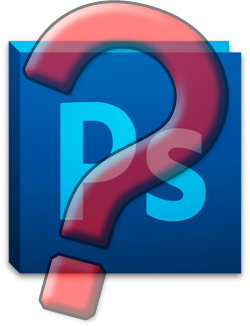
© John Watts. All rights reserved.
I am a great admirer of the Game of Professional Football (Go Chargers!). One of the things I’ve noticed about professional athletes, regardless of the sport: No matter how gifted and talented an athlete is, he/she will always go back to the basics, whether in preparation for a contest or a season.
With that spirit in mind, let’s go “back to the basics”–basic concepts and controls that you should know to get the most out of Photoshop.
By the way, I’ve covered most of the subjects mentioned here in detail in my past Apogee Photo articles. Click Here and scroll to the bottom for a complete list.
CONCEPTS
1. Work on a copy of your original image.
To make a copy, go to the “Image” menu -> Duplicate”, then close your original. This assures that your original image is intact, in case you make a mistake or want to try something different, etc.
2, Work in Adjustment Layers.
Think of adjustment layers as transparent overlays over your image, each layer doing something different (i.e. contrast control, color correction, etc.). For further control, you can also adjust the opacity of each layer separately (as a percentage), in the “Layers” Panel.
3, You can work “Globally” as well as “Locally”.
One of the biggest advantages to Photoshop is the ability to make corrections and adjustments “Locally” (affects only a portion of your image) by making selections (covered here). In the old analog world, corrections were almost always “Global” (affects the whole image), particularly color corrections.
4, Work in “16-bit” as long as possible.
If your original image is in 16-bit, such as a RAW file, keep working in 16-bit as long as you can. It is much better to work with 65,000+ values of each color (16-bit) than 255 values of each color (8-bit).
5, Standardize your Workflow.
It is important that you work on the various steps of your image in the proper order. For instance, contrast should be adjusted before your color is corrected. Touchup should be done before sharpening, and so on…
6. Create a “Master File”.
The “goal” is to create a multi-purpose un-flattened “Master File” for each image that you wish to enhance. From this Master File, you can “re-purpose” your file for a specific print size, for the Web, for magazine output, and so on.
CONTROLS
1. Work in Adobe 98 RGB color space.
A Color Space, by the way, is defined as “a system or color model for describing color numerically”. If your color settings are set up as suggested in past articles, you should already be working in this space. Work in the Adobe 98 RGB color space, as it is a great general purpose color space for digital photography. I would not use sRGB as the color gamut (the range of colors available) is too small or ProPhoto RGB, as the color gamut is too big.
By the way, you should be shooting your images in Adobe 98 RGB in your digital camera, not sRGB.Again, it’s a much larger color space and you will capture a lot more information.
2. Save your image frequently as you are working.
I like to save every time I add a new layer; that way, I don’t forget. In Mac, the speed key combination is “Command + S” and in Windows it is “Control + S”. It is also imperative to back up and archive important files on a regular basis in case you have computer problems.
3. Save your Images as TIFF files, not JPG files.
It is important to save your files as TIFF’s not as JPG’s. Every time that you open and save a JPG, there is degradation because the JPG compression scheme is not “lossless”
4. Work on your images at 300 pixels/inch.
This is the optimum PPI (pixels per inch) setting for viewing, prepping, and printing your image. To check this, go to the “Image” menu -> “Image Size”.
5. For the closest “1 to 1” or actual size of viewing, view your image at 25% magnification (at 300 PPI).
For most monitors, this will allow you to see what your image will look like in “the real world”. In other words, if you were to hold up a ruler to your monitor, 1” on the ruler is pretty close to 1” on the screen.
6. Turn on the “Ruler” for easier viewing of your image.
I like to have the Ruler turned on as it seems to give the image a sense of perspective. To toggle it on and off, use the speed keys “Command + R”for a Mac and “Control + R”for Windows.
7. Use the “History Palette” as well as the “Trash Icon” in the Layers Panel frequently.
These are both excellent ways to discover “what-if” scenarios and/or to make instant corrections on your image.
8. Flattened versus Unflattened Files
A flattened file has all of the layers “Collapsed” in the Layers Palette to reduce file size. A flattened file is best for printing. An unflattened file has all of the layers “expanded” in the Layers Panel. A Master or Archive file should be unflattened so that you can easily make corrections later nondestructively (meaning no loss of data/pixels).
To Flatten All Layers, go to the “Layer” menu -> “Flatten Image”.
To Merge the Layer immediately above (usually a background layer copy) to the Background Layer, go to “Layer” -> “Merge Layers”. This works well (and will make more sense) when you are done with Dodging/Burning or Sharpening.
Until the next time, have fun and stay well!
by John Watts, Watts Digital Imaging

Leave a Reply